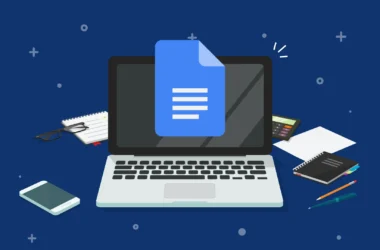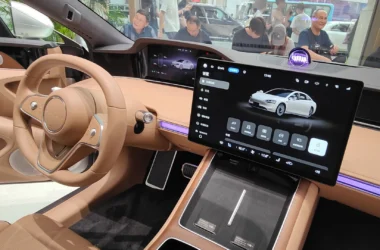iPhone 16 marks Apple’s bold step to lead the smartphone industry by integrating advanced artificial intelligence (AI) features. This new strategy combines cutting-edge AI technology with Apple’s renowned smartphone design, aiming to transform user experience and drive sales.
The unveiling of the new smartphone comes at a critical juncture for Apple, which has been grappling with stagnating sales and increased competition from rivals.
Major Unveiling Amidst Declining Sales and Market
At Monday’s “Glowtime” event, Apple’s presentation of the iPhone 16 was marked by a notable feature: an external camera button. This seemingly simple addition is a tangible signal of the profound internal changes Apple has integrated into its latest smartphone. The button symbolizes the company’s commitment to pushing the envelope in smartphone technology, driven by the latest in AI innovations.
Apple’s CEO, Tim Cook, has highlighted the iPhone 16 as a significant leap forward, promising that the upgrades will “push the boundaries of what a smartphone can do.” Despite these bold claims, Apple faces tough competition, as other brands have already implemented generative AI features into their devices. This competitive pressure is reflected in Apple’s stock performance, which saw a decline during the event, ending the day relatively flat. The company, valued at $3 trillion, is under scrutiny for potentially falling behind in the rapidly advancing AI sector.
AI Integration and Feature Enhancements
Sales of the iPhone, which constitutes about half of Apple’s total revenue, have been sluggish recently, with a 1% decline over the past nine months compared to the previous year. In response, Apple has designed the iPhone 16 to cater specifically to AI capabilities, incorporating longer-lasting batteries, more powerful chips, and enhanced privacy features. These advancements are aimed at supporting the new “Apple Intelligence” tools, many of which were previewed earlier in June.
Key features of the iPhone 16 include advanced AI-driven tools for writing and creating new emojis, as well as the integration of OpenAI’s ChatGPT into Siri. This enhancement allows for more sophisticated text generation and query responses, promising a more intuitive and interactive user experience. However, Apple’s AI features are not scheduled to be available until October in the US, with international rollouts beginning later, including a December launch in the UK.
Expanding the Ecosystem: Apple Watch and AirPods Updates

In addition to the iPhone 16, Apple introduced updates to its Apple Watch and AirPods. These enhancements include automatic volume adjustment during in-person conversations and the ability to decline calls with a simple head shake. The Pro version of the AirPods will also function as a “clinical grade” personal hearing aid for users with mild to moderate hearing loss. Apple is seeking marketing approval for this feature, with expectations for a fall release in over 100 countries, including major markets like the US, Germany, and Japan.
Marketing Challenges and Consumer Reactions
The iPhone 16’s introduction was overshadowed by protests across the street, where demonstrators criticized Apple for its policies on app content safety. Despite the controversy, the company remains optimistic about the new range, which will be available for pre-order starting in September, with the iPhone 16 priced from $799.
Ben Wood, chief analyst at CCS Insight, acknowledged that while some may view the external camera button as a “glorified shutter button,” the iPhone 16 offers substantial upgrades. He believes the combination of Apple Intelligence and new camera features will appeal to loyal customers seeking future-proof technology. Wood’s analysis suggests that Apple’s approach will likely spur upgrades among existing users.
Competitive Landscape and Future Outlook
Apple’s slower adoption of generative AI compared to competitors like Samsung and Google is a notable challenge. Rivals are rapidly integrating AI features into a variety of innovative smartphone designs, including folding and tri-fold devices. For instance, Huawei’s new Mate XT tri-fold phone has already garnered over three million pre-orders, highlighting the competitive pressure Apple faces.
Analyst Annette Zimmermann from Gartner emphasizes the importance of Apple delivering on its AI promises. She cautions that rushing features to market before they are fully ready could damage Apple’s reputation and result in missed sales opportunities. As AI continues to evolve, Apple’s ability to innovate and execute effectively will be critical in maintaining its competitive edge and reversing the current sales slump.
In summary, the iPhone 16 represents Apple’s strategic attempt to rejuvenate its smartphone sales through advanced AI features and a refreshed design. While the company is positioning itself as a leader in AI integration, the effectiveness of these innovations in capturing market share will be closely watched in the coming months.




